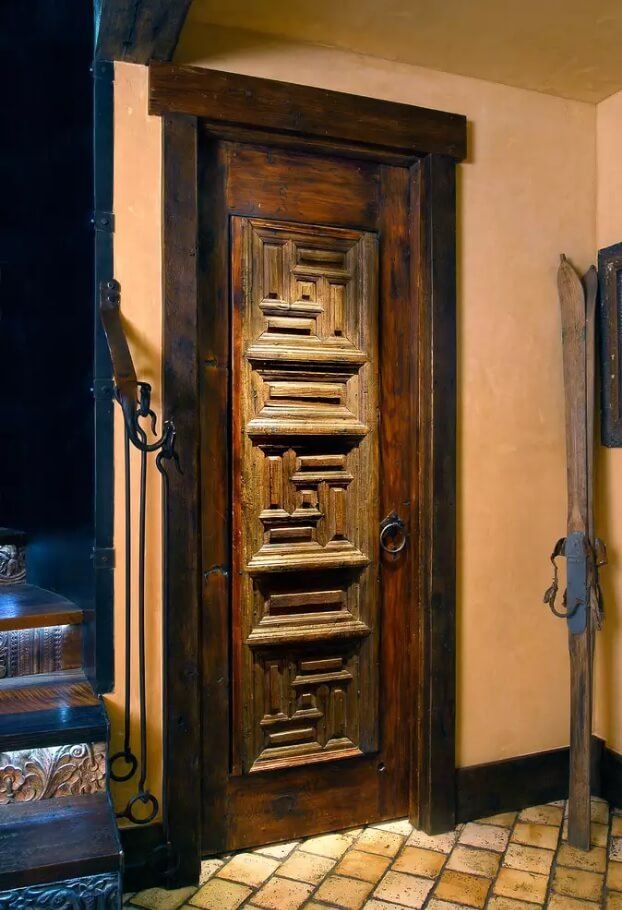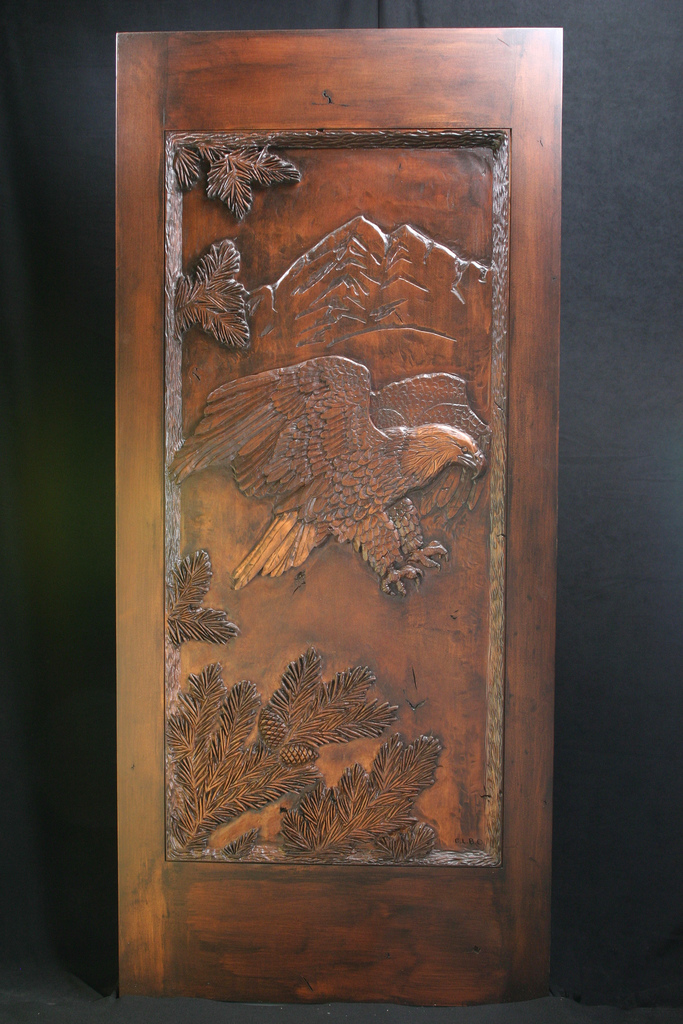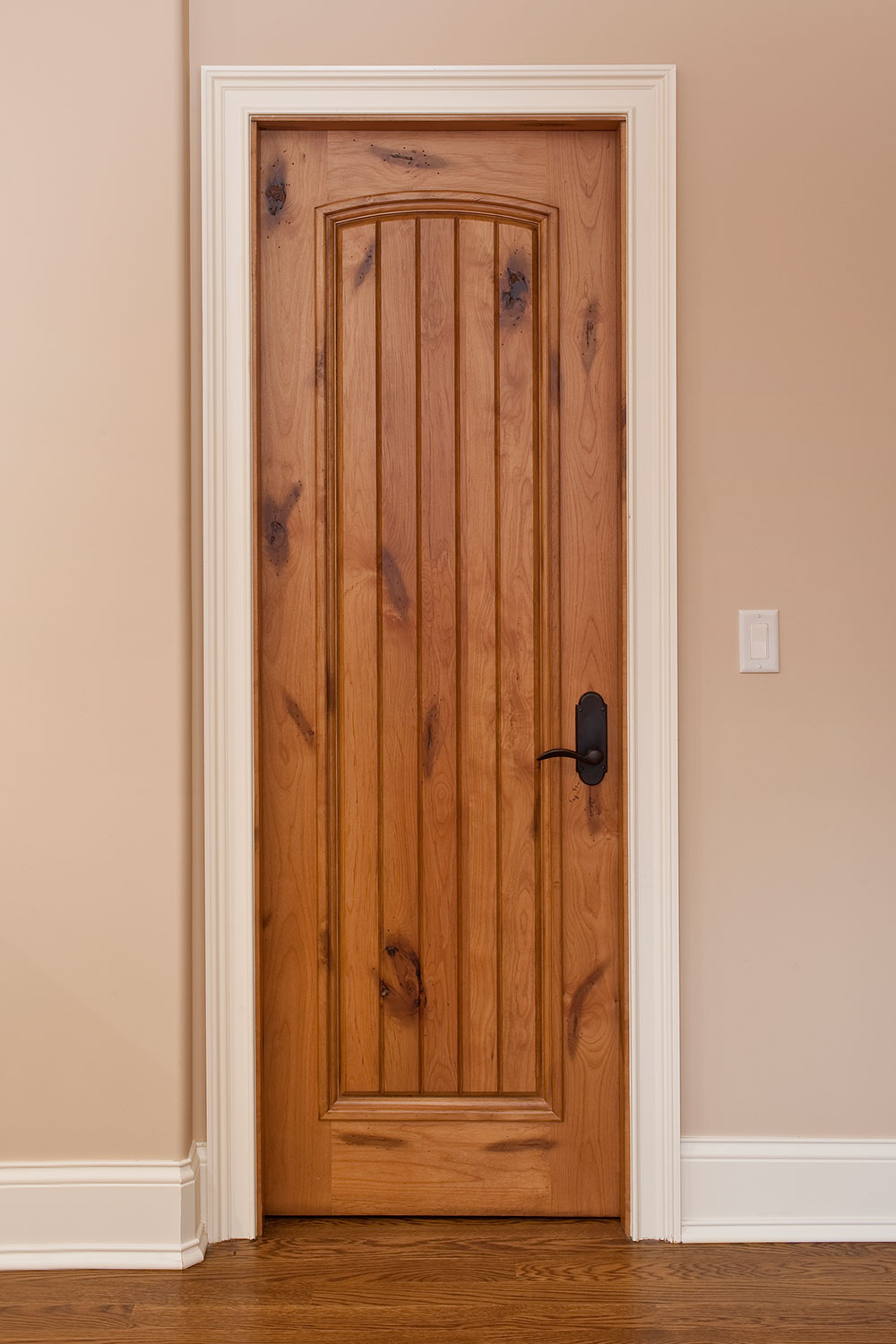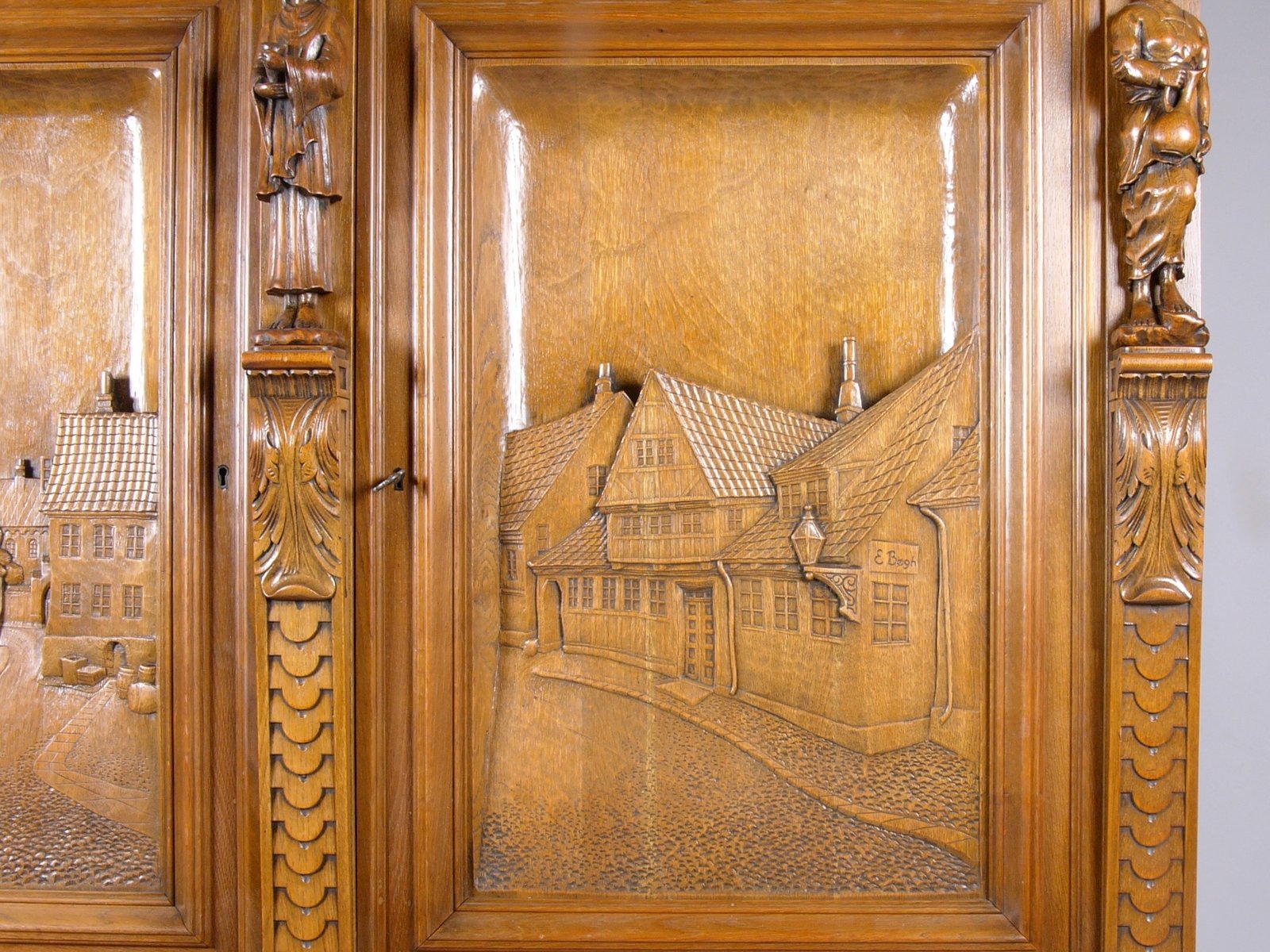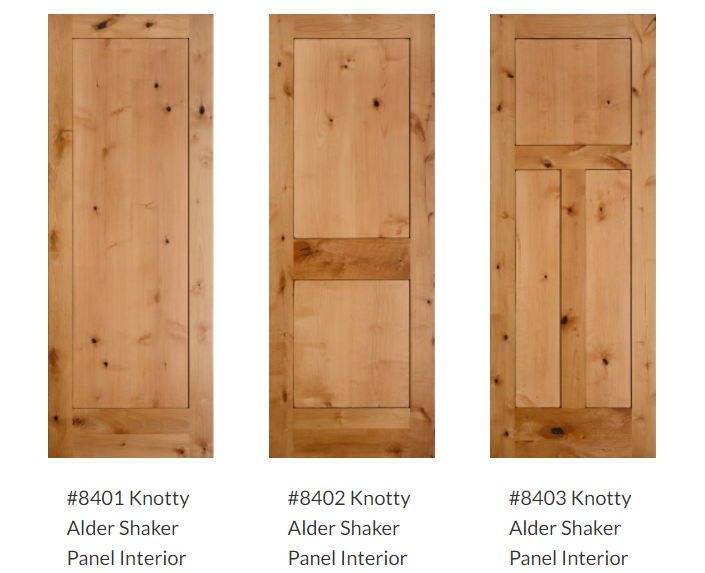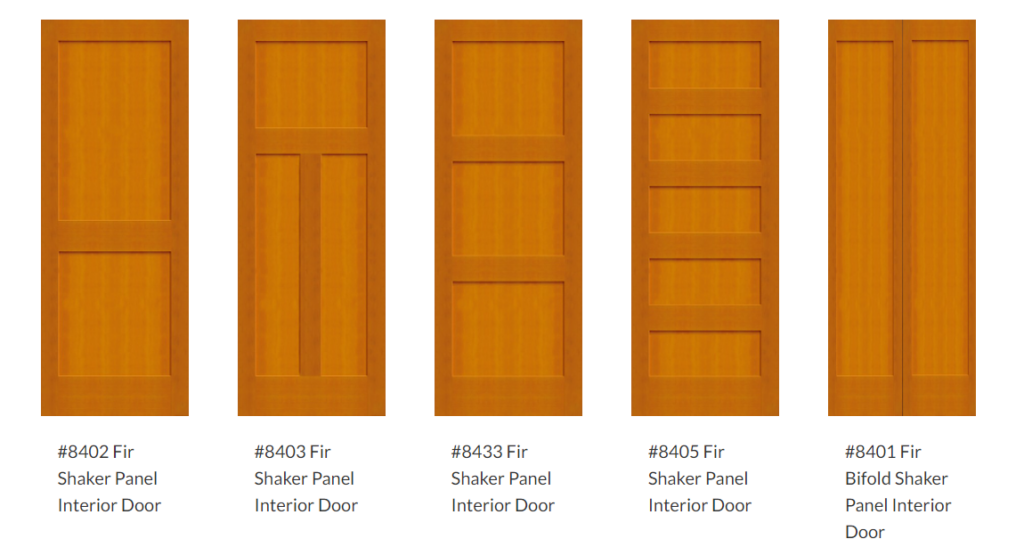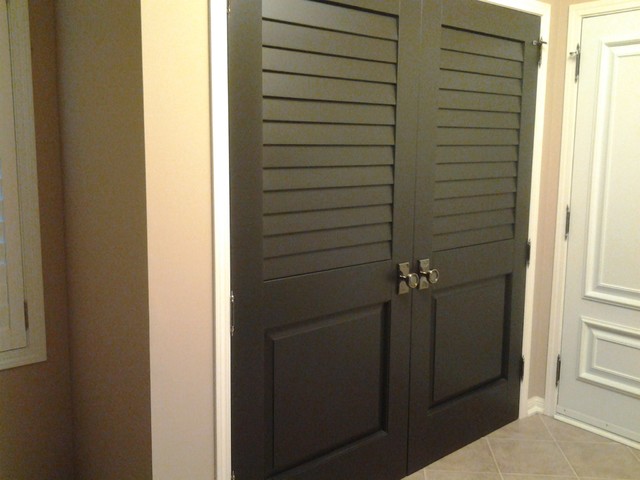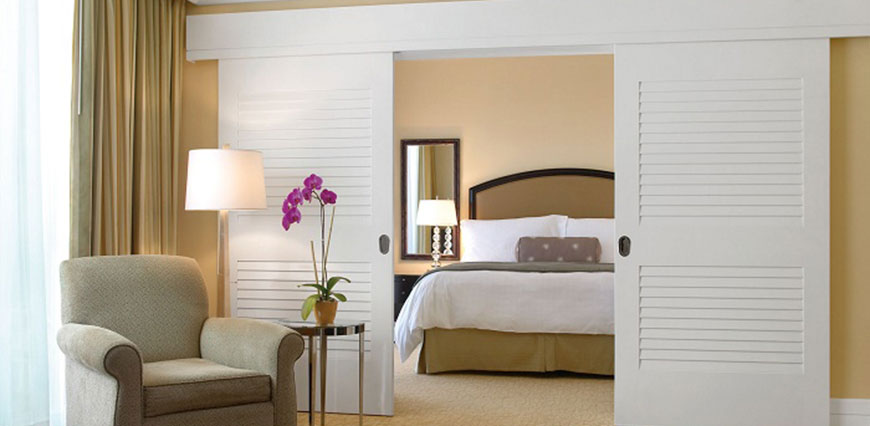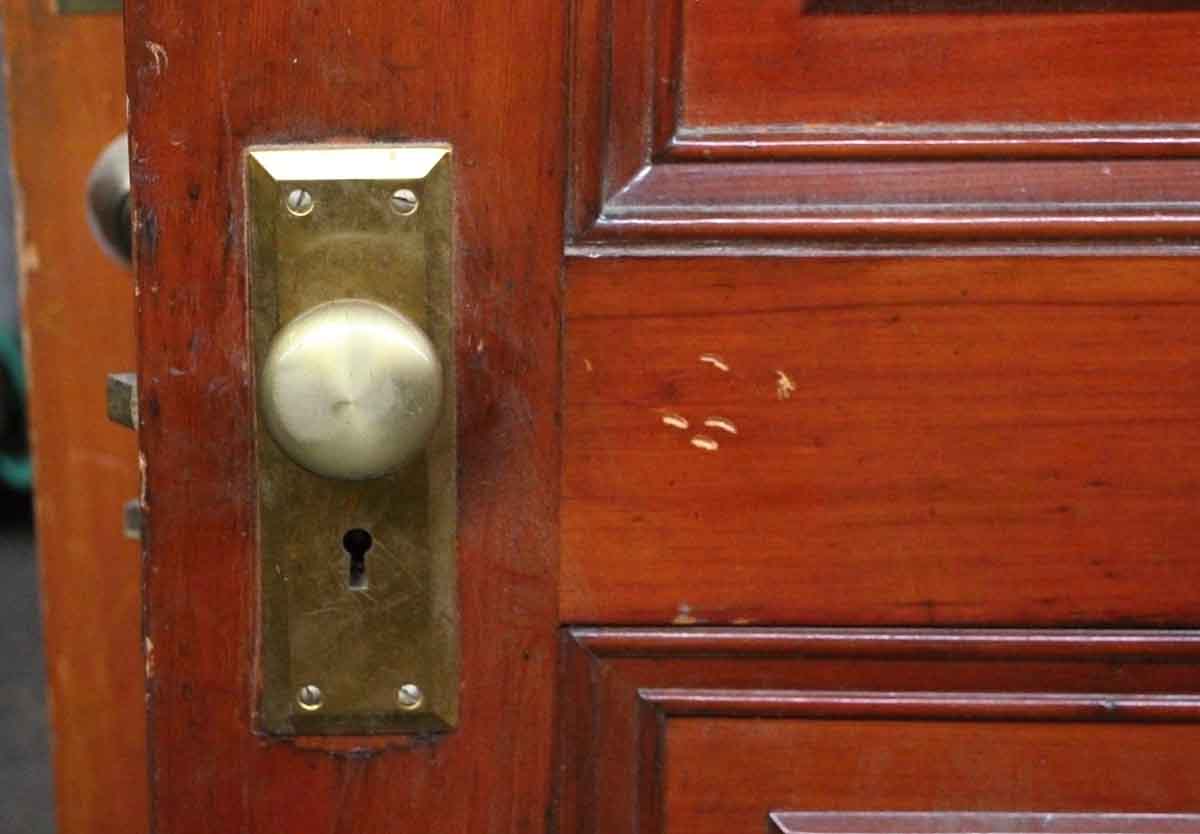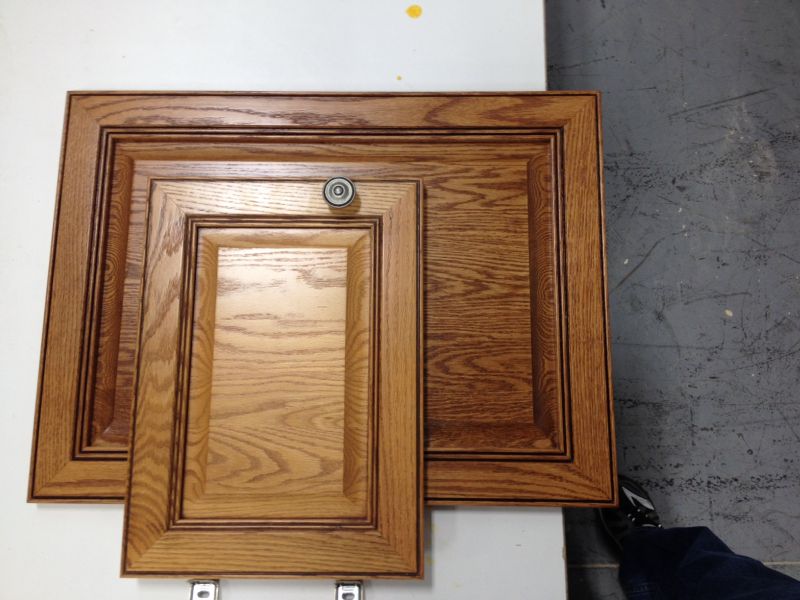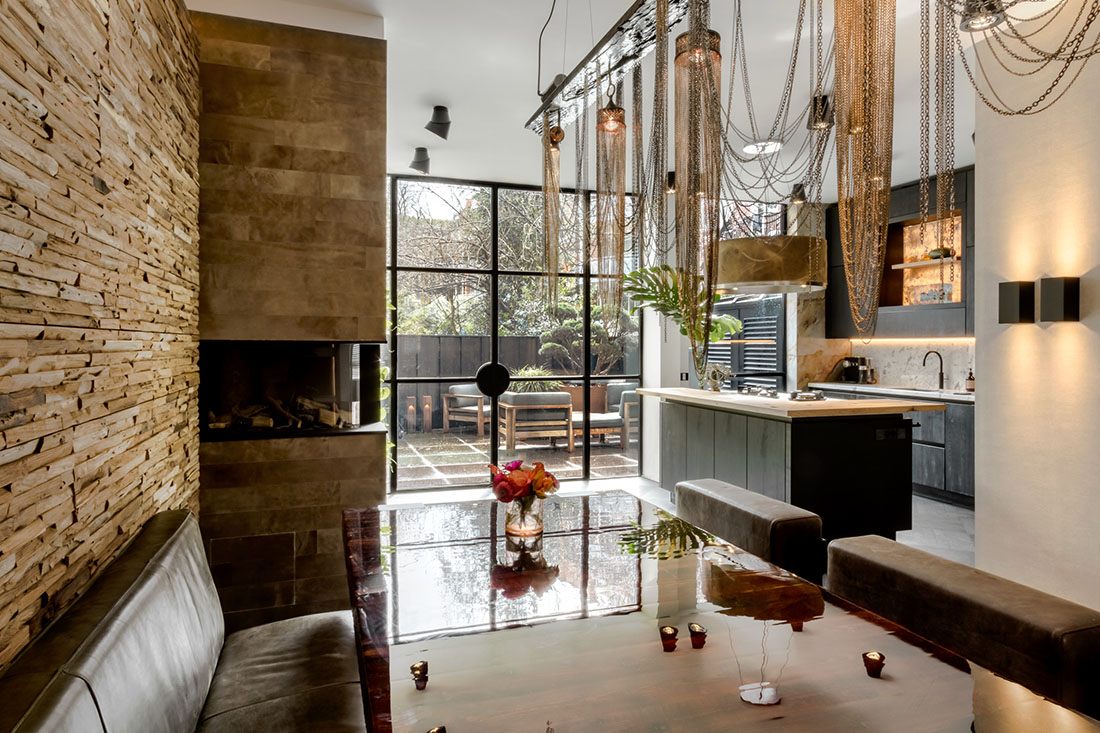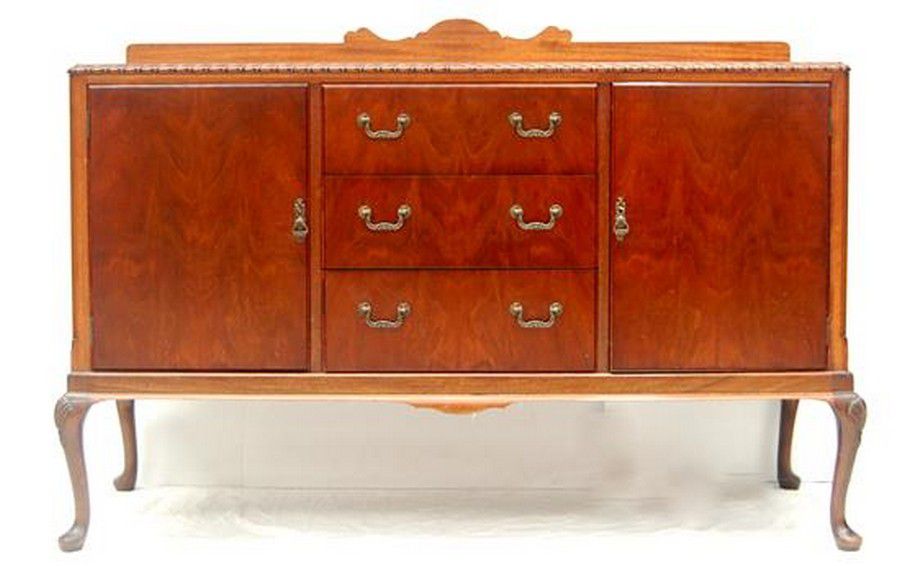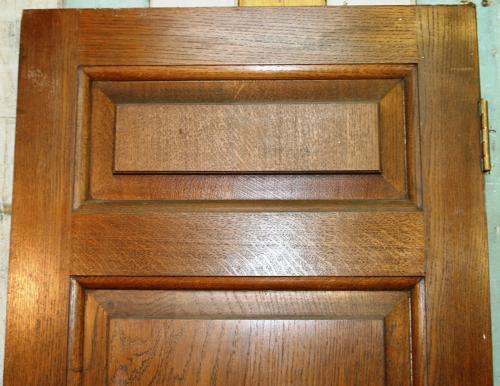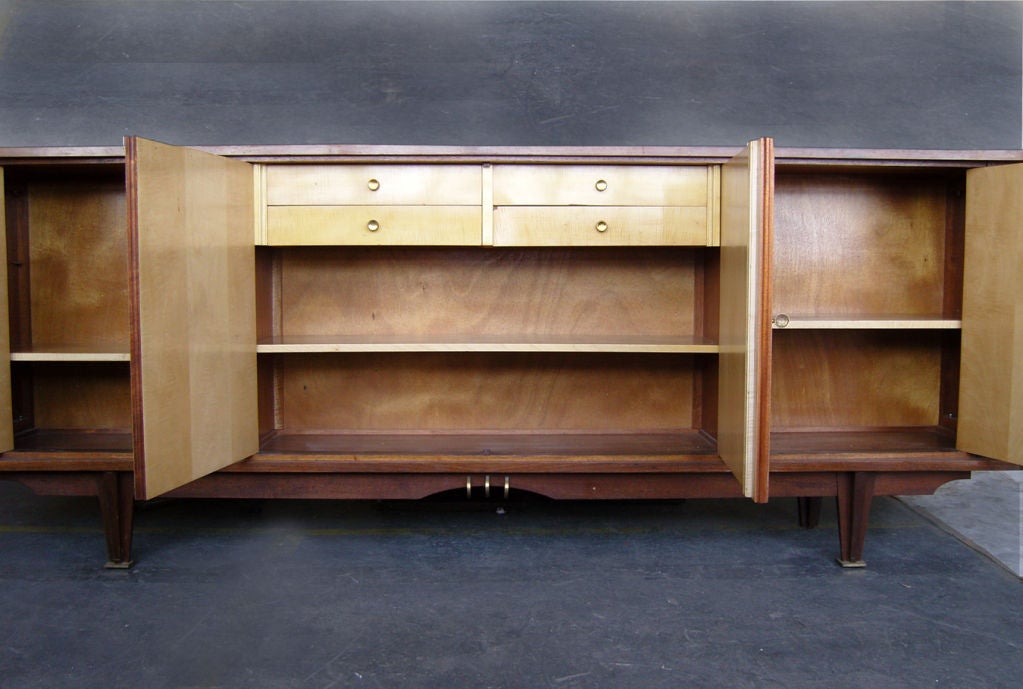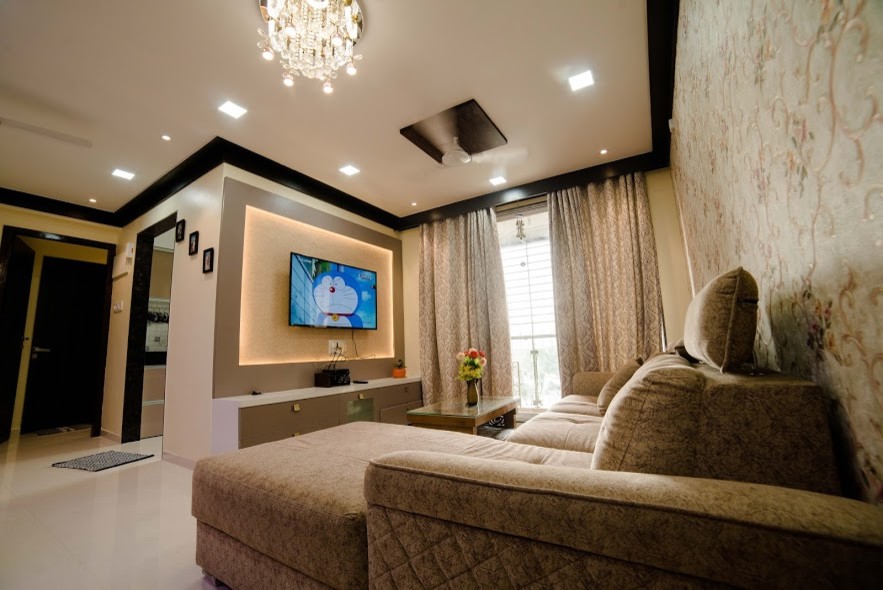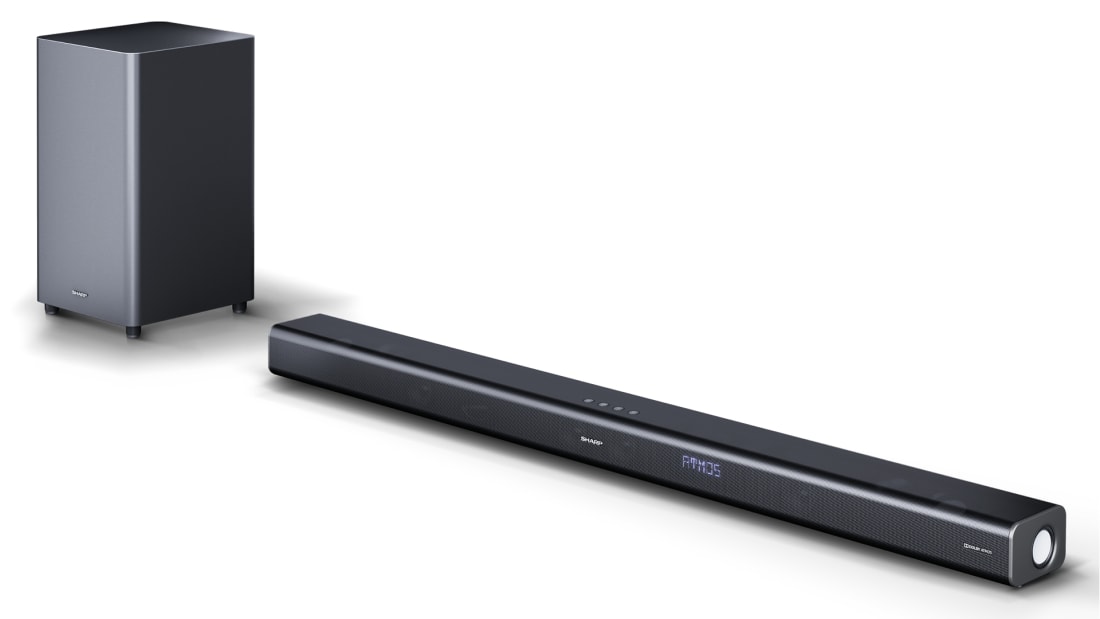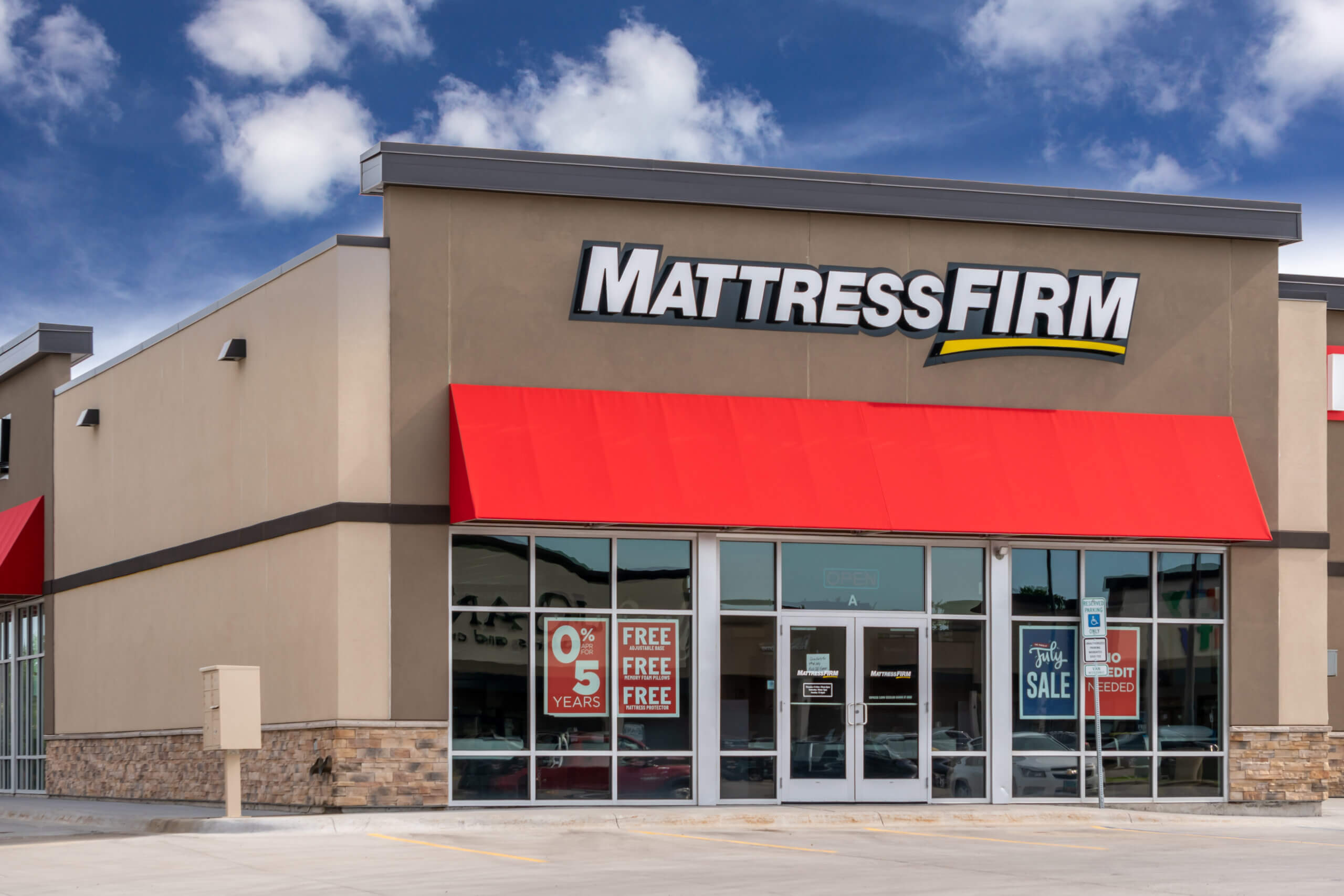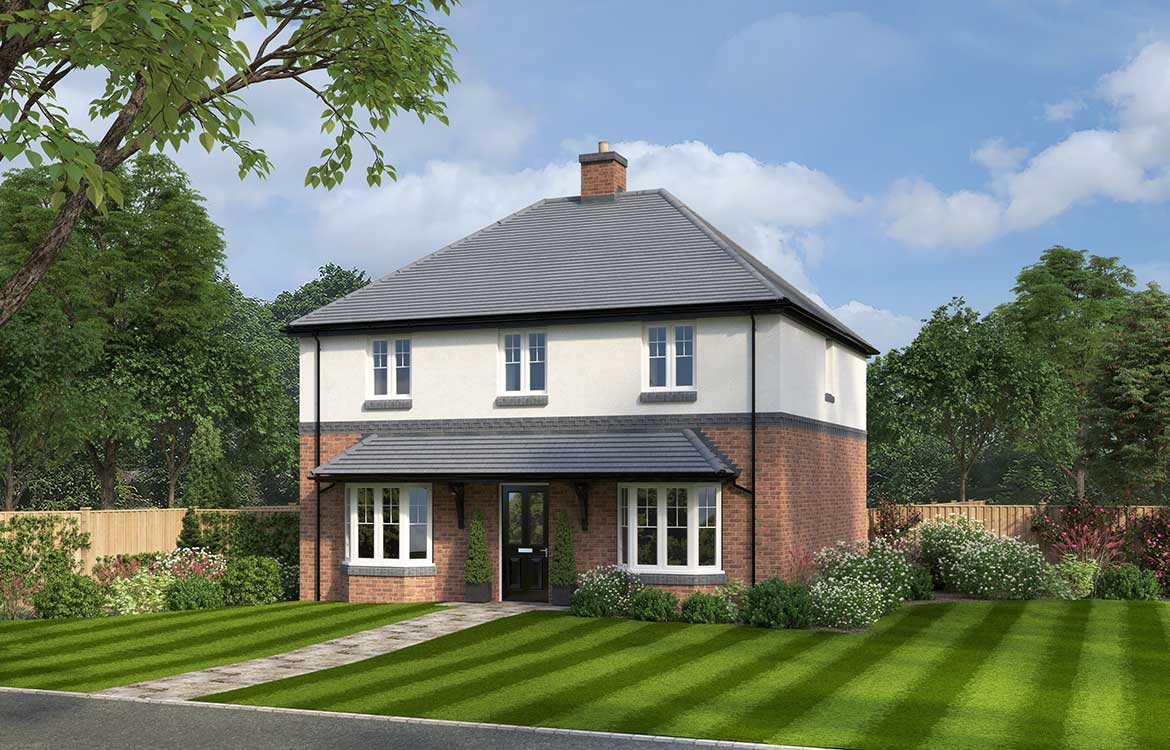The featured material for 1950s solid wood interior doors with carved details was popular as an eye-catching detail in mid-century designs. In an era of mass-produced items, adding intricately carved elements to the design helped set houses apart from the rest. The 1950s was the peak for carved design in the door and furniture making industry. The selection of woods was vast and included mahogany, walnut, oak, cherry, and maple. Beautiful wood grains mixed with elegant sweeping curves to create a magnificent spectacle. Carvings might have followed a pattern or architectural theme, such as foliage or abstract stylized patterns. Additional elements for the design were also used to enhance the aesthetics, such as hardwood frames with detailed stylized moulding. These 1950s solid wood interior doors with carved details would make a grand entrance in any mid-century home.1950s Solid Wood with Carved Detail Interior Doors
1950s interior doors with mouldings were available in a wide range of styles and finishes. These 1950s door designs came in many different panel shapes, such as single or double, with raised, flat, or recessed panels, and with additional detailed modifications like flutings and carvings. These doors were typically made with hardwood materials such as oak, cherry, walnut, and mahogany. These materials were carefully selected for their ornamental qualities, such as a grain pattern, texture, or color that would complement the interior design. They were then finished with a variety of different colors and paints to bring out the details that the woodgrain offered. Doors with mouldings are timeless pieces and can easily be incorporated into a modern design as a tribute to mid-century style.1950s Interior Doors With Moldings
The iconic 1950s Shaker panel interior door combines contemporary lines with traditional craftsmanship. With its clean lines and simplicity of design, this style marks an aesthetic contrast to its ornate predecessors. These doors typically feature panels made from either solid wood, or a combination of glass and wood. The best wood for making these doors is hardwoods like oak and maple, as they provide breathable, durable door panels. These doors can also be customized with refinements like textured surfaces, trims, beading, and mouldings, to add a finishing touch. A high-gloss paint finish will create an especially stylish, 1950s-style look. The Shaker interior door is just as relevant now as it was in the 1950s and would make a timeless addition to any home.1950s Shaker Panel Interior Doors
The 1950s saw a rise in popularity for louvered interior doors. Louvered doors feature overlapping slats that allow air to circulate while keeping moisture and dust out. They are typically made of hardwood material including oak, cherry, and mahogany. Their slatted design means the louvers can be repositioned for maximum ventilation. When it comes to styling, louvered doors can be customized with trim in the form of mitered joints, ornamental mouldings, and dentils. These doors come in a variety of styles from contemporary to traditional, and make an attractive addition to any mid-century home.1950s Louvered Interior Doors
The 1950s was the peak for intricate decorative wooden doors. The selection available featured strong hardwoods like maple, cherry, oak, and mahogany, as well as lesser hardwoods such as pine, walnut, and hickory. The woods were stained and finished with a variety of techniques and materials. The major characteristic of 1950s decorative doors was a prominent panel shape. The panels would feature intricate detailing, such as arches, decorative trim, and carvings. Doors could also include glass panes, louver slats, and other elements to add texture. These 1950s decorative doors are still timeless pieces that can be incorporated into designs today, and make a beautiful entrance into any home.1950s Decorative Internal Doors
Raised panel interior doors became popular during the 1950s, as a way to add texture and depth to a home’s interior. These doors typically featured a wood panel raised from the door frame and carved with intricate designs. For enhanced decoration, the panel could be painted or stained in a contrasting color to the frame. The most common woods used for these doors were hardwoods like oak and maple. The panels were also crafted with other woods like walnut, cherry, and mahogany. Customers could choose from a variety of colors and grains in order to match the style of their home. Raised panel doors are a timeless piece and can easily be included in contemporary designs. They add elegance to any home or office space.1950s Raised Panel Interior Doors
The 1950s were the era of the six panel interior door. This type of door has remained popular in modern times due to its pleasing symmetry and soft lines. These doors typically feature two raised panels on the top and bottom, with two flat panels on either side. The inner panels are also often raised to create a stronger depth of design. Six panel doors were traditionally made with hardwoods like oak, cherry, mahogany, maple, and walnut; however, they could also be made of less expensive softwoods like pine. The doors were finished with a variety of stains, paints, and clear finishes to emphasize the beautiful wood grains. These doors are an attractive, timeless piece and would make a stylish entrance to any home.1950s Six Panel Interior Doors
The 1950s saw a rise in the popularity of Dutch doors, otherwise known as half doors. These doors feature a top and bottom section that can open independently of one another. They provide a great solution for homeowners who want to let in natural light and fresh air while still maintaining security. Dutch doors were typically constructed from solid hardwood materials like oak, walnut, or mahogany. Doors could also be resized to fit any space, and were typically finished with a specialized multi-step varnish to bring out the luster and grain of the wood. Today, Dutch doors remain a popular choice for homeowners and bring an element of style to any home.1950s Dutch Interior Doors
The 1950s saw an increase in popularity for mahogany interior doors. This wood is widely used due to its beautiful reddish-brown color, and attractive grain and texture that is suitable for any style of home. During the 1950s, mahogany was also a relatively inexpensive option for doors due to its abundance. Mahogany is an extremely durable wood, and when crafted into doors, it is strong enough to last for many decades. These doors also have additional style benefits, such as being able to be customized with detailed carvings and mouldings to individualize any home. Mahogany doors remain a timeless piece and add warmth and luxury to any home.1950s Mahogany Interior Doors
Oak interior doors were commonplace in 1950s homes due to their affordability, strength, and aesthetically pleasing natural grain and color. Oak is a dense hardwood that is naturally stable and resistant to cracking or splitting. This means it was an ideal material for crafting into interior doors during the mid-century. Oak was most often used in the form of veneers, due to its cost-effectiveness. This allowed for the production of more intricate door designs, while still maintaining a strong and durable form. They were typically stained and finished with a multi-step varnish to bring out its natural beauty. Today, oak doors are timeless pieces that can easily be incorporated into a traditional or modern style. They add richness and character to any home.1950s Oak Interior Doors
In the 1950s, painted interior doors were a popular way to add character to any home. These doors were traditionally made from hardwoods like oak, mahogany, and cherry. The wood was then stained and finished with a number of different colors, from light to dark, depending on the desired aesthetic. For an extra touch of style, many homeowners also chose to add additional elements, such as mouldings and trim, to give their doors a unique look. The doors could also be adapted to include louvered slats and glass inserts, depending on the design. Painted doors are a classic mid-century piece that can easily be incorporated into any interior design, be it traditional or contemporary.1950s Painted Interior Doors
Utilizing 1950s-Style Interior Doors For a Timeless Home Design
1950s Materials
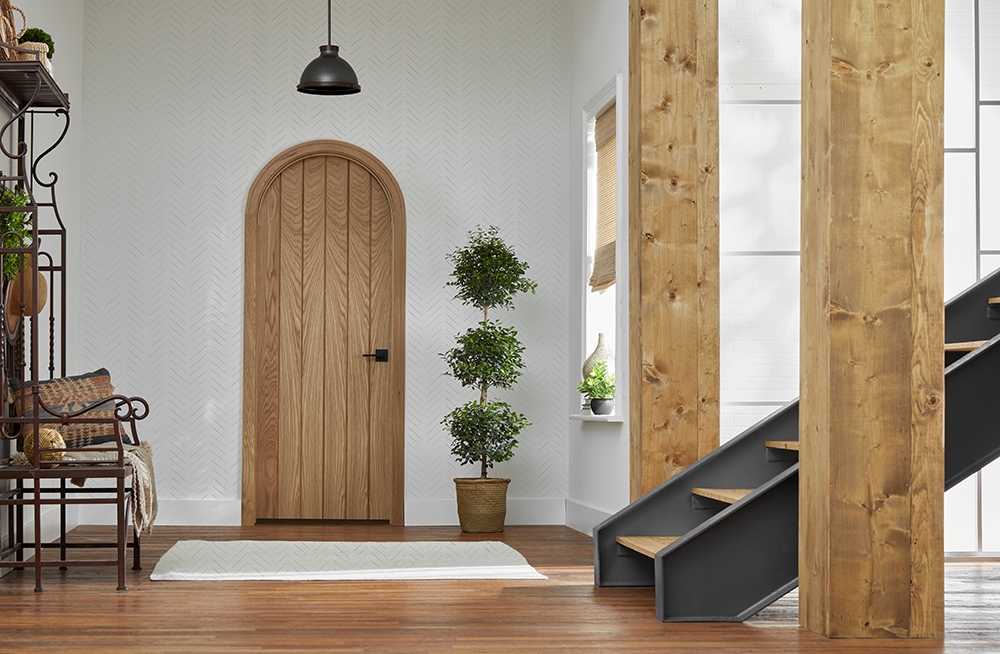 The materials and styles of interior doors from the 1950s era have undergone a significant.
Transformation
, allowing for a variety of choices when creating a timeless home design. 1950’s era wooden doors, for example, are now available with
enhanced features
, such as
color-matched framing
and a wealth of finished options. This presents a great opportunity to incorporate traditional wood and panel designs that elevate the look of any home, or introduce an old-world stained-wood style that is reminiscent of the bygone era.
The materials and styles of interior doors from the 1950s era have undergone a significant.
Transformation
, allowing for a variety of choices when creating a timeless home design. 1950’s era wooden doors, for example, are now available with
enhanced features
, such as
color-matched framing
and a wealth of finished options. This presents a great opportunity to incorporate traditional wood and panel designs that elevate the look of any home, or introduce an old-world stained-wood style that is reminiscent of the bygone era.
1950s Designs
 In addition to the material options, interior doors from the 1950s era come in a range of
contemporary designs
. From handleless, minimalist-style barn doors in rustic textures, to full-length interior French doors handcrafted in glass and open-pane wooden frames, the possibilities are practically endless when it comes to finding the perfect door for your home.
In addition to the material options, interior doors from the 1950s era come in a range of
contemporary designs
. From handleless, minimalist-style barn doors in rustic textures, to full-length interior French doors handcrafted in glass and open-pane wooden frames, the possibilities are practically endless when it comes to finding the perfect door for your home.
Adorning The Doors
Conclusion
 No matter what design you choose, interior doors of the 1950s era offer an unbeatable combination of classic style, functionality, and durability. With the right mix of materials and accents, you’ll be sure to realize a timeless home design that effortlessly ties together all the other elements of your living space.
HTML Code:
No matter what design you choose, interior doors of the 1950s era offer an unbeatable combination of classic style, functionality, and durability. With the right mix of materials and accents, you’ll be sure to realize a timeless home design that effortlessly ties together all the other elements of your living space.
HTML Code:
Utilizing 1950s-Style Interior Doors For a Timeless Home Design
1950s Materials
 The materials and styles of interior doors from the 1950s era have undergone a significant
Transformation
, allowing for a variety of choices when creating a timeless home design. 1950’s era wooden doors, for example, are now available with
enhanced features
, such as
color-matched framing
and a wealth of finished options. This presents a great opportunity to incorporate traditional wood and panel designs that elevate the look of any home, or introduce an old-world stained-wood style that is reminiscent of the bygone era.
The materials and styles of interior doors from the 1950s era have undergone a significant
Transformation
, allowing for a variety of choices when creating a timeless home design. 1950’s era wooden doors, for example, are now available with
enhanced features
, such as
color-matched framing
and a wealth of finished options. This presents a great opportunity to incorporate traditional wood and panel designs that elevate the look of any home, or introduce an old-world stained-wood style that is reminiscent of the bygone era.
1950s Designs
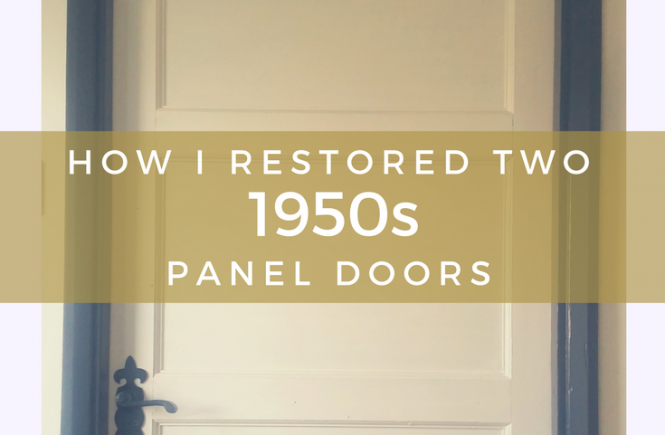 In addition to the material options, interior doors from the 1950s era come in a range of
contemporary designs
. From handleless, minimalist-style barn doors in rustic textures, to full-length interior French doors handcrafted in glass and open-pane wooden frames, the possibilities are practically endless when it comes to finding the perfect door for your home.
In addition to the material options, interior doors from the 1950s era come in a range of
contemporary designs
. From handleless, minimalist-style barn doors in rustic textures, to full-length interior French doors handcrafted in glass and open-pane wooden frames, the possibilities are practically endless when it comes to finding the perfect door for your home.
Adorning The Doors
 When it comes to adorning the doors to truly make them stand out, artisans have a wide range of options to choose from. For example, they can select
once-popular details
such as wrought iron hinges or intricate metal knobs in an antique finish. Alternatively, they can opt for an added dimension of sparkle with beveled mirrors or etched glass designs. Other classic details include uranium glass frosted patterns or cut crystal and brass accessories.
When it comes to adorning the doors to truly make them stand out, artisans have a wide range of options to choose from. For example, they can select
once-popular details
such as wrought iron hinges or intricate metal knobs in an antique finish. Alternatively, they can opt for an added dimension of sparkle with beveled mirrors or etched glass designs. Other classic details include uranium glass frosted patterns or cut crystal and brass accessories.
